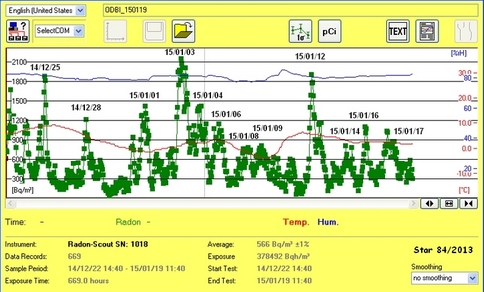|
Phase 3 tests the
infrastructure and validates the data. The actual monitoring stations
are presented in the next figure.
The
stations:
| MLR |
Muntele
Rosu, updated |
| COVR |
Covasna
Voinesti,
new |
| PLOR7 |
Plostina
7,
new |
| PLOR4 |
Plostina
4, updated |
VRI
|
Vrancioaia,
updated |
| LOPR |
Lopatari,
updated |
| NEHR |
Nehoiu, updated |
| ODBI |
Odobesti , updated |
were updated with new equipment.
Names
|
Locations
|
Sensors
|
BISR
|
Bisoca
|
Acceleration and speed
seismic sensors, air and ground acoustic, radio ULF,
magnetic field, inlinometer, radon, temperature, humidity, air pressure.
|
| LOPR |
Lopătari
|
Acoustic,
radon, inlinometer, temperature, humidity, air pressure.
|
| NEHR |
Nehoiu
|
Acceleration and speed
seismic sensors, acoustic, inlinometer, radon, temperature, humidity, air pressure, air ionisation, meteo station, CO2.
|
| MLR |
Muntele
Roșu
|
Acceleration and speed
seismic sensors, inlinometer, radon, temperature, humidity, magnetic field X, Y, Z, acoustic, radio ULF.
|
| COVR |
Covasna
|
Acceleration and speed
seismic sensors, radio ULF.
|
| PLOR4 |
Ploștina
|
Acceleration and speed
seismic sensors, acoustic, infrasound, air and boring temperature, meteo station, air ionisation, telluric field, air electrostatic
field, inlinometer.
|
| PLOR7 |
Ploștina |
Acceleration and speed
seismic sensors, infrasound, air temperature, air ionisation, radio ULF, video camera for clouds and sky monitoring, radiometer for solar radiation (incoming
from sun and outgoing from ground).
|
| VRI |
Vrâncioaia
|
Acceleration and speed
seismic sensors, ground - air acoustic for V and H directions, air and ground infrasound, air and ground temperature, meteo station, air ionisation, telluric field, electric scalar
field, magnetic scalar field, inlinometer, radon, air pressure, humidity, radio ULF,
air ionisation, solar radiation (piranometru), video camera for clouds and sky monitoring.
|
| ODBI |
Odobești
|
Acceleration and speed
seismic sensors, acoustic, meteo station, radon, temperature, umiditate, inlinometer.
|
The first tests of network was a meteor explosion over Vrancea area.
The seismic stations recorded the sock waves:
There was a main explosion and
other secondary two.
Next figure shows the recods made by seismic sensors.
The corelation between seismic
records
and our multidisciplinary network reaction is presented in next figure:
The waves propagation is affected
by atmospheric conditions. Meteorological stations give us information
about wind (speed, direction), humidity, atmospheric pressure and
precipitations. We had
variations on ULF receiver, air ionisation, air electric field and
telluric field.
An example
of air ionization in Nehoiu after explosion is in next figure:
The bright
light created by meteor
explosion was recorded by two video cameras that continuously monitor
clouds and sky:
The explosion created acoustic
waves that were recorded in
Odobesti, Vrancioaia and Bisoca. Example for BISR (air and ground):

An example of
radon monitoring is in the next figure. The equipment measures
the air
pressure, humidity, temperature and includes an inclinometer, too.

|

